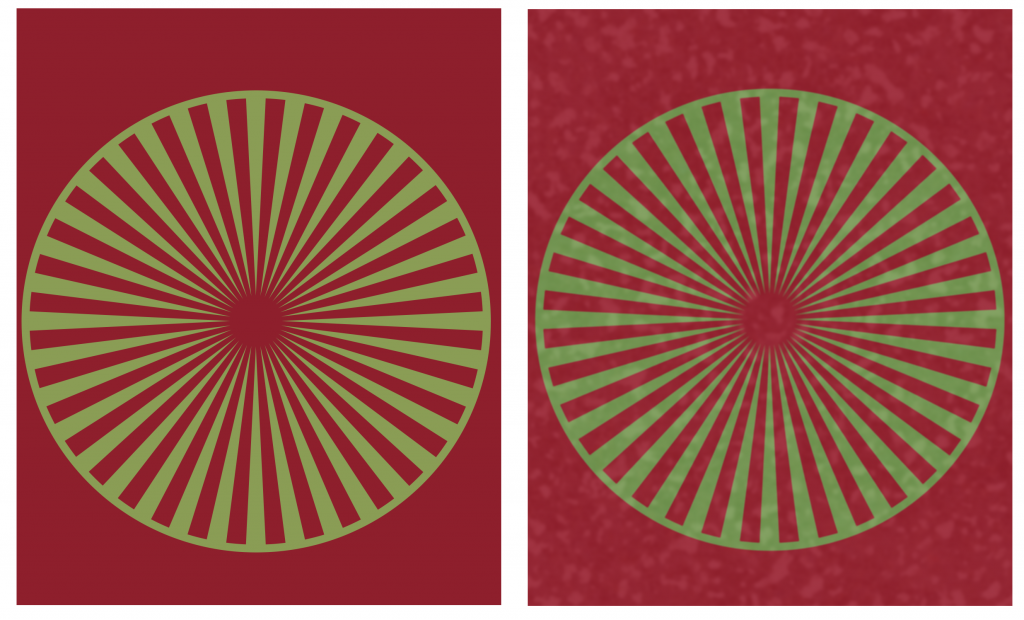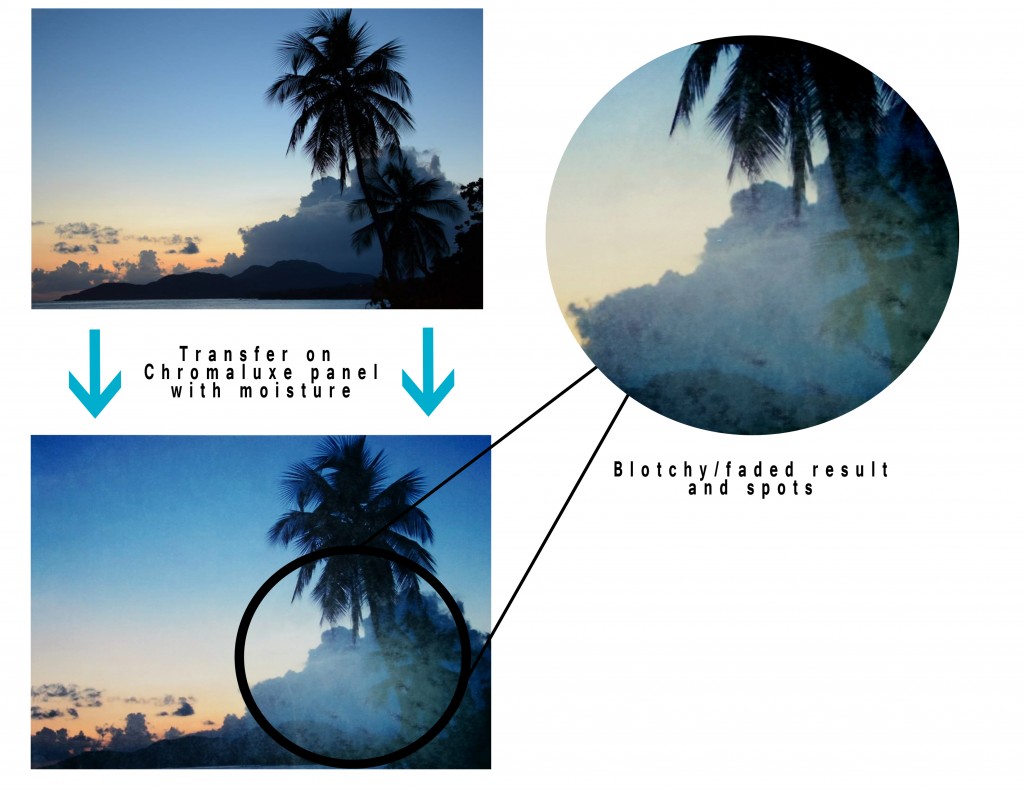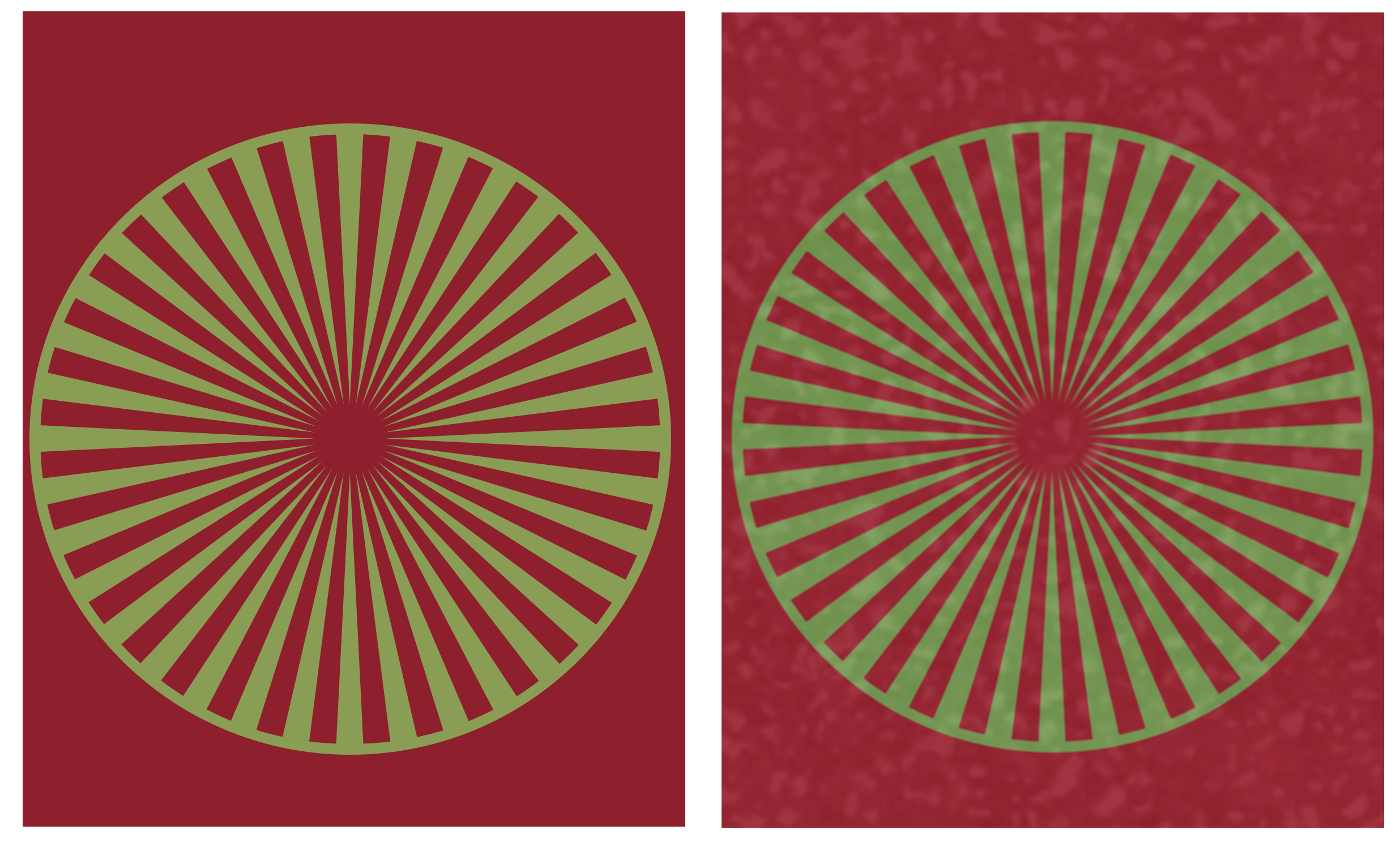Regardless of whether you are new to the process of sublimation or have been doing it for years, blotches and spots in your transfers can happen to anybody at any time. Often times, this is a problem caused by excess moisture in the environment or on the substrate – when it’s outside of more common user/machine error issues like insufficient time/temperature or uneven pressure.

Common sublimation materials like polyester fabric, hardboard, plastic and even metal materials like aluminum and stainless steel can hold moisture! What happens when there is moisture on a substrate? When water is heated it turns into steam vapor which starts to escape upward – however, since dye-sublimation ink also turns into a gas, the steam vapor from the areas that have even the smallest amounts of moisture clash with the sublimation gas which can prevent a full and consistent transfer. In really bad results, you would have a finished transfer that looks like a watercolor-painting-gone-bad, but most of the time, the result is some blotchy spots throughout the transfer and faded/streaky areas.

So how to resolve a nearly invisible problem? The quick solution is to pre-press substrates immediately before applying & heat pressing the sublimation transfer. Pre-pressing is done by placing the item in the heat press (without the printed transfer on it), covering it with a protective sheet such as silicone or Teflon to avoid scorching or getting it dirty. Only a fraction of the time is necessary, generally about 10-20 seconds for most items. The temperature and pressure should follow the recommendations for the particular item. If you see steam, that is a sure sign there is moisture. With larger or more expensive substrates, we recommend pre-pressing closer to the full amount of time per the instructions to avoid potential failed results. For additional protection, you may use a layer of polyester fabric which will wick away the escaping moisture. Allow the item to cool before moving onto the actual transfer to avoid sublimation being activated too soon which can result in ghosting (blurriness).
To avoid moisture becoming a problem, there are a few things to take into consideration. Generally, the larger the item is in both dimension and thickness, the more problematic it can become as it can hold in more moisture. Anything about 11″ x 14″ in or larger and 1/2″ in or more thick should always be pre-pressed just to make sure moisture doesn’t affect your workflow.
Consider the seasons of the year… moisture is present year round, but especially in the summer months, and substrates travel though different areas that may be more humid or hotter than your location, so a general rule of thumb is to always pre-press. It will add a little bit more time to the process but save you money and a headache at the end of the day.
For more tips, tricks, and all-around breaking edge industry news, click here to check out ARA’s issue which features our technical support specialist Kristen Harvey describing the moisture problem in great detail as well as more specialists, their suggestions and experiences.
